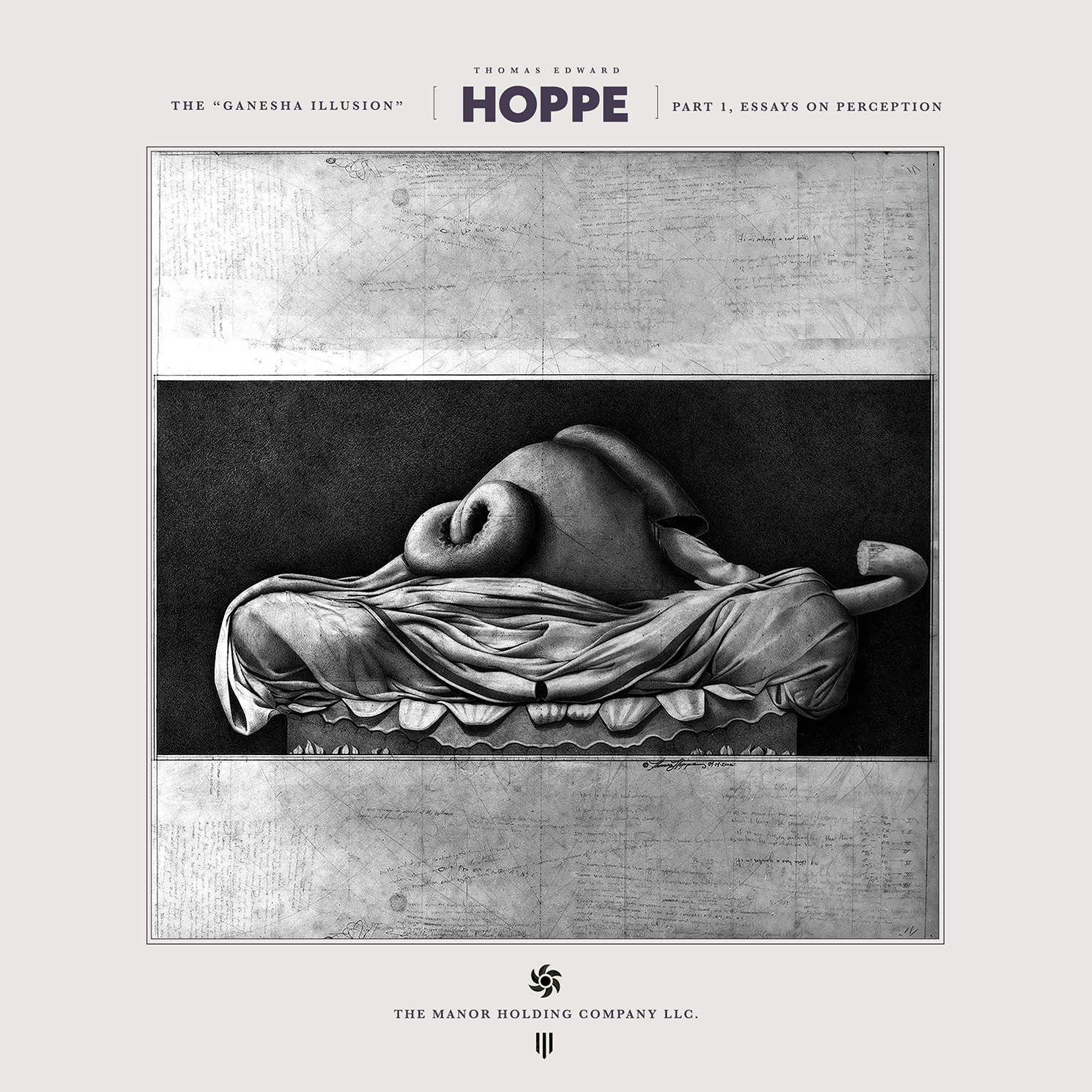Part 1: The Barn
The title of this drawing is "Ganesha," a Hindu God with the Head of an Elephant. He rests on a giant lotus flower with legs crossed in meditation. His elephant head is in his lap, dreaming. His trunk wraps behind his back and forms a coil on the top of his head. You can see his eye if you look very carefully, an ear, and where the tusk and the trunk are connected. The tusk comes out towards the viewer but it is broken. Why is the tusk broken? That's something I encourage you to research.
Ganesha is perhaps the most popular of the Hindu gods, and there are many stories. I am not a religious person, but I enjoy reading the stories and myths. Trying to interpret them is fun and challenging. Ganesha is said to be a remover of obstacles, and should be consulted before embarking on any difficult journey.
I started this drawing around 1998 and finished it in 2002. I was living in the barn when I first developed this idea and began plotting out the geometry. My obstacle was not constructing a design this large - measuring 4' x 4', but rather the obstacle I would soon face, namely leaving my barn behind... The inevitable re-entering into the world and adult life.
I started this drawing around 1998 and finished it in 2002. I was living in the barn when I first developed this idea and began plotting out the geometry. My obstacle was not constructing a design this large - measuring 4' x 4', but rather the obstacle I would soon face, namely leaving my barn behind... The inevitable re-entering into the world and adult life.
The years I spent in the woods taught me many things. I learned that there is no separation between myself and the external world. I no longer thought of Nature as a place I lived. It is, in truth, a product of the mind and an outer manifestation of my inner self. With this understanding, it became clear that there is no separation between myself and my Art. Ganesha, therefore, can be seen as dreaming us into existence. His dream is our reality.
Portraying Ganesha in this way was not my initial inclination. In fact, for the first two years, I worked on this, he was entirely complex, complete with multiple arms and hands. This presented an enormous challenge. Shading the background requires many layers of graphite, and you can't place your hand anywhere within the bounds of the rectangle you are shading. Thus, navigating between arms, hands, and fingers - managing the overlapping passes of soft graphite, on a four-foot piece of paper was difficult to say the least.
It probably sounds laborious and exhausting, but shading is actually highly meditative under normal conditions. I learned to draw before my earliest memories, so it is completely second nature to me, akin to breathing. Shading is a time of deep, sustained reflection - where I tap a wellspring of profound ideas. While shading, in the abyss of the darkening background, Ganesha began to transform.
I found myself shading over the hands I had so painstakingly designed, shading them out until they eventually disappeared. I continued reducing the design complexity more and more radically, removing all that was superfluous. This eventually became an appropriate reflection of who I am. An external representation of my state of mind and a symbol of what I believe.
I was to Nature what Ganesha was to the lotus blossom, and in turn, all three carry the same message and symbolic value. Thus, we can understand the meaning of this piece of Art through the symbol of the lotus... Who sits on top of the water and blossoms, experiencing the world in all its beauty, but needing nothing more than the mud from the bottom of the pond to survive.
- Thomas E. Hoppe

